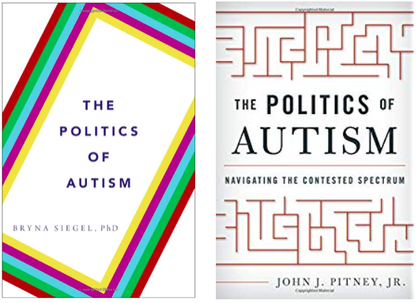California Autism & Medicaid/MediCal Cuts: Critical – Facts & Consequences
Submitted by Ashwin Krishnan
- Statewide Autism and Medi-Cal/Medicaid Data
- Autism Spectrum Disorder (ASD) Prevalence in California
○ 4.5% of 8-year-old children in California were identified with ASD in 2020,
significantly higher than the 2.8% national average (https://www.kidsdata.org/).
○ 1 in 22 four-year-old children in California are on the autism spectrum
(https://www.cdc.gov/autism/data-research/?CDC_AAref_Val=https://www.cdc.go
v/ncbddd/autism/data.html).
● Rising Demand for Autism Services
○ Autism Diagnoses Increasing:
■ Autism cases in California’s special education system have surged from
14,038 in 1990 to 120,089 in 2018—an 8.5-fold increase
(https://www.ncsautism.org/blog//the-torrential-surge-in-autism-continues-
unabated).● Special Education Enrollment
○ Over 800,000 children and youth (ages 0-22) received special education
services in 2020, accounting for 13% of all students
(https://www.kidsdata.org/).
○ Autism accounted for 16% of these enrollments, up from 10% in 2011
(https://www.kidsdata.org/).● In-Home Supportive Services (IHSS) & Medicaid/MediCal Dependence
○ As of 2024–2025, California’s IHSS program serves approximately 691,075
recipients statewide (https://www.chcf.org/publication/medi-cal-facts-figures/).2. What Services & Programs Are at Risk?
Home & Community-Based Services (HCBS) especially at risk
● Cuts to Medicaid HCBS will reduce funding for:
○ Residential support services (group homes, assisted living, supported living
services).
○ Employment support programs (job coaching, vocational rehabilitation).
○ Day programs & community integration services (social skills training, life
skills programs).
○ IHSS (In-Home Supportive Services) for families supporting ASD children at home.
Impact of IHSS Cuts
● IHSS cuts could push more ASD children into institutional settings because parents cannot afford to stay home full-time without assistance.
● Reducing community-based services increases long-term state costs due to increased emergency care use and institutionalization rates
(https://calmatters.org/health/2025/03/medicaid-cuts-republican-districts/,
https://thealliance.health/proposed-medicaid-cuts-would-threaten-access-to-health-care-for-all/).
Real-World Case Example:
(https://www.texastribune.org/2016/11/28/texas-quietly-moves-forward-cuts-therapy-services/).
● Parents quit jobs to provide care at home, increasing reliance on food stamps and housing assistance—shifting costs elsewhere.Impact of Supported Employment Programs
● Employment Rates & Job Outcomes
○ 61.42% of adults with ASD in supported employment programs found jobs, compared to only 38.58% of those without such support
(https://mastermindbehavior.com/autism-employment-statistics/).
○ Supported employment programs are cost-effective, yielding better outcomes at
a lower total cost than standard Medicaid care
(https://www.dol.gov/sites/dolgov/files/ODEP/topics/pdf/Cost-Effectiveness_of_In
dividual_Placement_and_Support.pdf).
Consequences of Cutting Supported Employment
● Increased unemployment: Loss of vocational services reduces workforce
participation, forcing more ASD individuals to rely on SSI & other social programs
(https://pmc.ncbi.nlm.nih.gov/articles/PMC8354554/).
● Higher homelessness risk: Medicaid cuts to supported living services correlate with a
30-50% increase in homelessness for individuals with developmental disabilities
(https://endhomelessness.org/blog/cutting-funding-for-medicaid-will-increase-homelessness/).
Real-World Case Example: Illinois “Waiting List” Crisis (2010s)
● Underfunding Medicaid disability services led to a lawsuit (Ligas v. Maram) after
thousands of ASD individuals were institutionalized indefinitely due to lack of HCBS.
● State psychiatric hospital & ER admissions surged, leading to skyrocketing costs for institutional care (https://clearinghouse.net/case/11623/).3. Increased Costs & Burden on State Due to Medicaid Cuts
● Increased Emergency Room Visits
○ States that reduced Medicaid funding saw increased psychiatric hospitalizations for individuals with developmental disabilities
(https://pmc.ncbi.nlm.nih.gov/articles/PMC4764986/).
○ Uncompensated ER visits cost states $120 million more annually when
community disability services are slashed
(https://www.kff.org/report-section/medicaid-and-uncompensated-care-costs/).● Rising Incarceration Rates
○ 40% of individuals in U.S. jails have a disability, including autism and
intellectual disabilities
(https://www.nami.org/advocacy/policy-priorities/improving-health/mental-health-treatment-while-incarcerated/#:~:text=About%20two%20in%20five%20people,within%20the%20overall%20adult%20population.).● Higher Costs of Institutionalization
○ Institutional care often costs states more than Medicaid-supported HCBS
(https://www.macpac.gov/).
○ incarceration costs are often higher than HCBS-supported living expenses. For instance, in New York State, the cost of incarceration ($115,000) significantly exceeds the average HCBS expenditure ($60,172)
(https://publications.ici.umn.edu/risp/data-bytes/expenditures-per-person-by-age-in-2020).Real-World Case Example: Florida’s Disability Services Cuts & Jail Overcrowding (2010s)
● Florida’s Medicaid cuts led to more ASD individuals being jailed for minor
infractions due to lack of proper behavioral interventions.
● The state spent $95 million per year jailing individuals with I/DD & autism, far
exceeding the cost of community-based services
(https://www.nami.org/Blogs/NAMI-Blog/December-2018/How-the-Criminal-Justice-System-Fails-People-With-Mental-Illness).4. California’s Heavy Dependence on Medicaid & National Impact
● California’s developmental disability services rely on $7-8 billion annually in
federal Medicaid support (https://www.ncsl.org/health/medicaid-funding).
● Without Medicaid, California faces a severe funding shortfall due to already
underfunded disability services.
State Budget Allocations for Disability Services
● Department of Developmental Services (DDS) Budget: $13.6 billion ($8.2 billion state
funds).
● IHSS Budget: $24.3 billion ($9 billion state funds).
● Medi-Cal Budget: $161 billion (50% federally funded via Medicaid).
Why California is at Unique Risk
● California’s disability services funding is already stretched thin—any further cuts will cause irreversible damage.
● Historically, disability services are often the first to be cut and the last to be reinstated, leaving vulnerable populations without adequate support for yearsConclusion
● Medicaid/MediCal cuts will increase ER visits, incarceration, homelessness, parents ability to work to stay home and care for children, and long-term costs for California.
● Historical case studies (Texas, Illinois, Florida) show that states that cut disability
services face severe consequences.
● Investing in Medicaid-funded autism & disability programs saves money long-term while improving lives.
The 2025 Medicaid cuts must be reconsidered to prevent widespread harm to California’s developmental/intellectual disability/autism community
Actions you can take:
YOU can influence your state and federal legislators now.
Taking a wait and see attitude means action will probably be too late. Congress is working on this now.
1) Call the Medicaid hotline yourself 866-426-2631 (only takes about 2 minutes) Also Ask your relatives and friends, and colleagues in other states to call the Medicaid hotline too.
2) Thanks to the ARC of California you can record a video message telling what services you are using and need to members of Congress and how reduction or elimination of services would impact the disabled and your family. Record a video message by going to this link. https://app.memento.com/share-your-story-to-save-medicaid/- ARC will share your video with legislators.
3) Attend a town hall and tell your legislator about your needs
Thanks to all for their advocacy in saving our services.
Connie Boyar. PHN MS
Advocacy Chair, San Francisco Bay Area Autism Society







